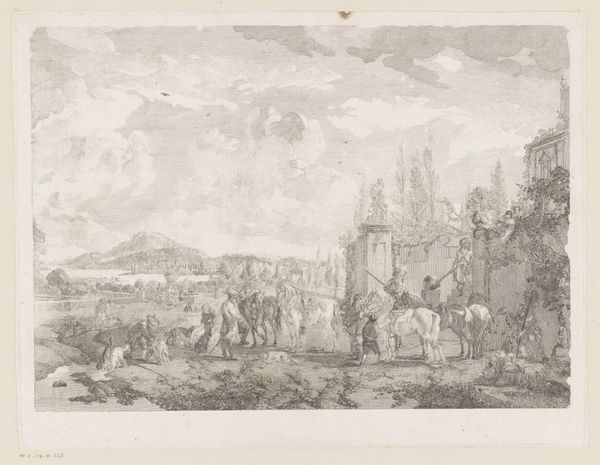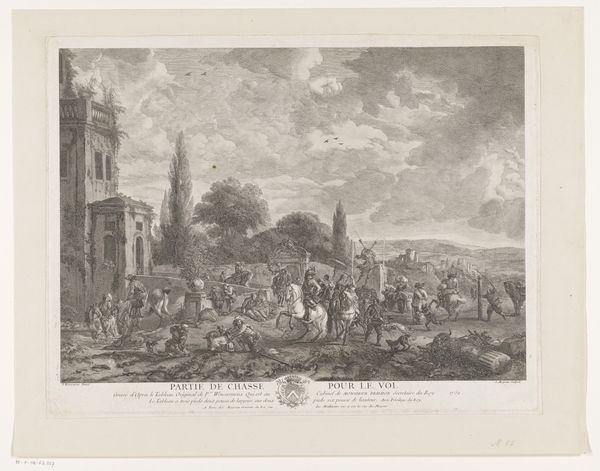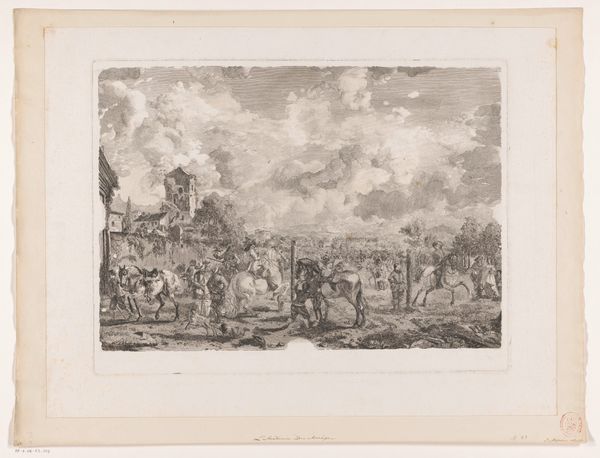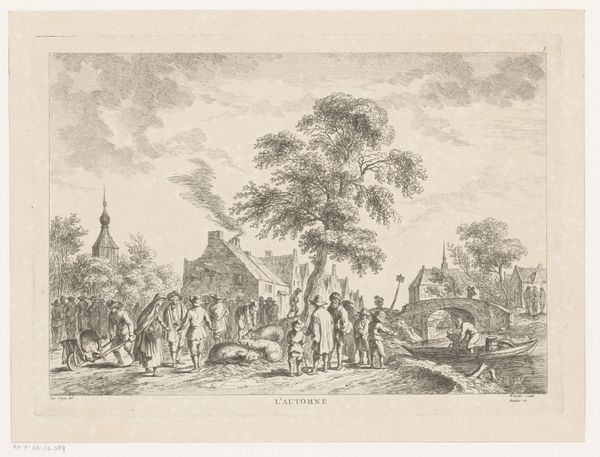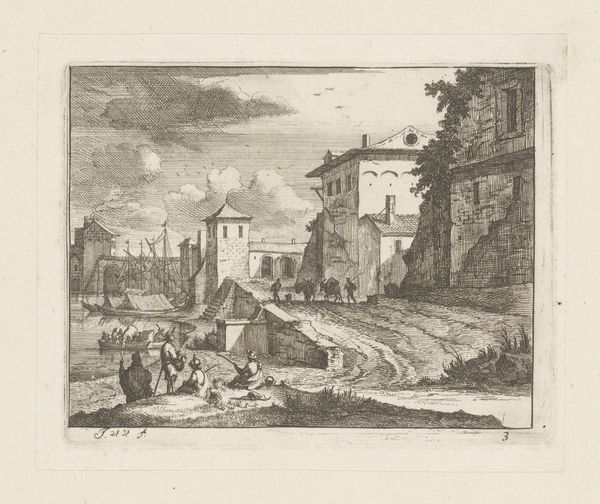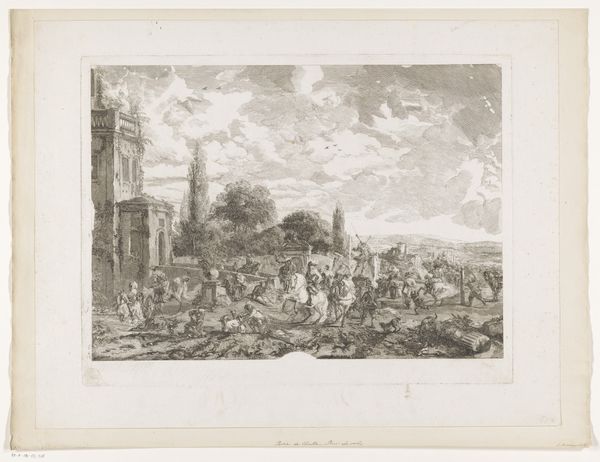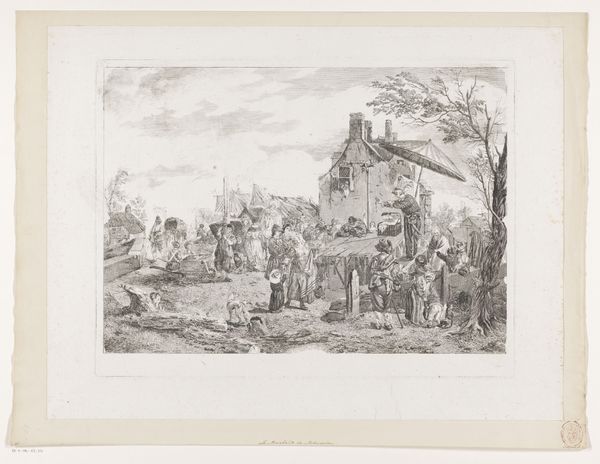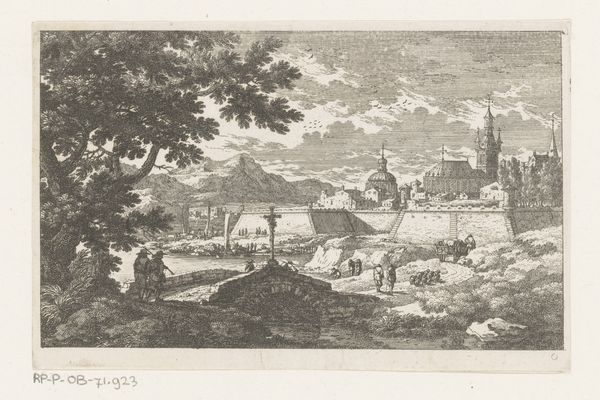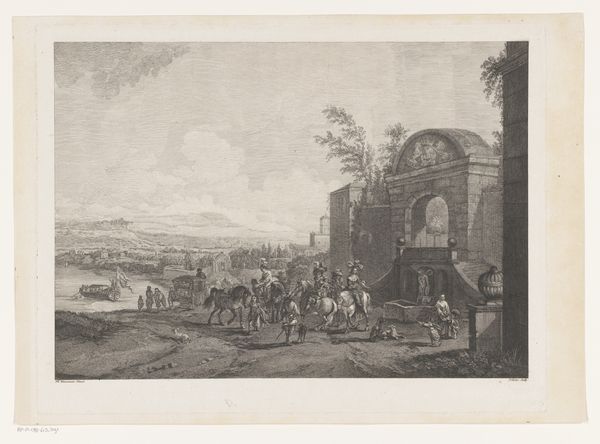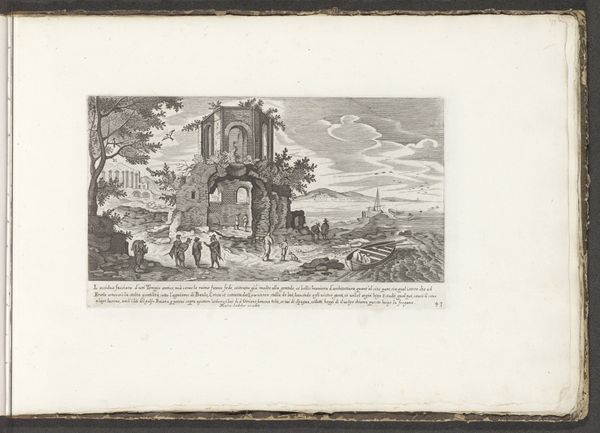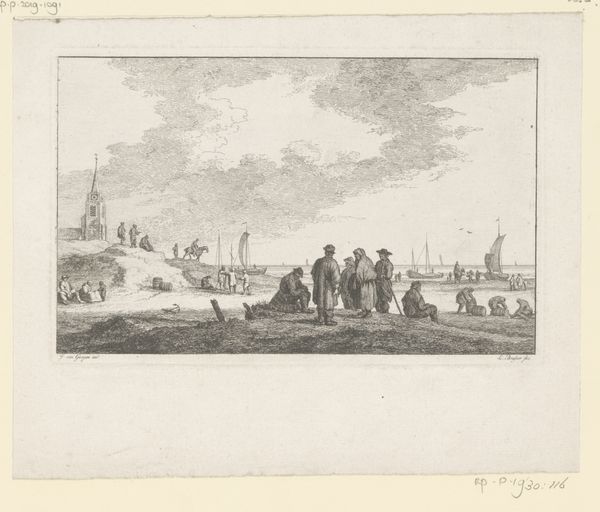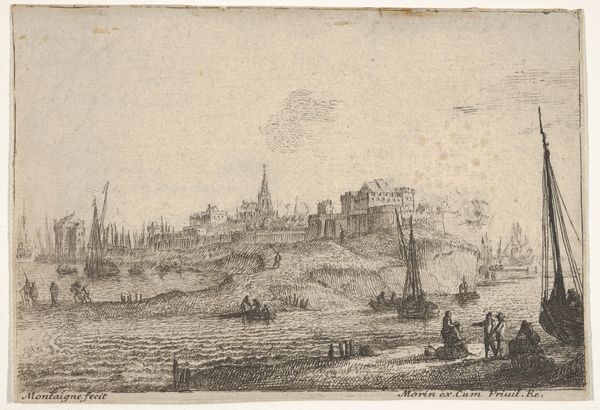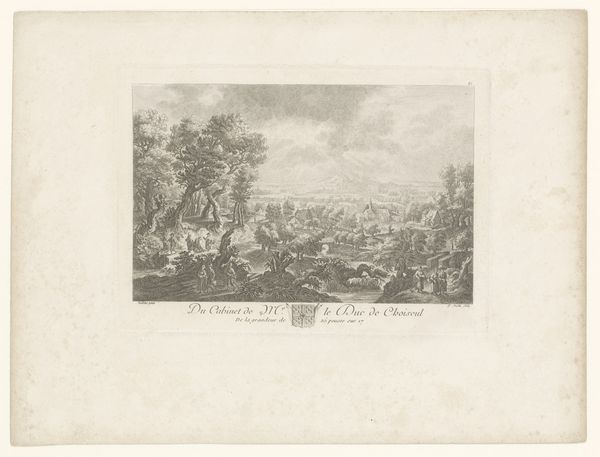
Jachtgezelschap bij een beek met op de achtergrond een Neptunus fontein c. 1733 - 1762
0:00
0:00
print, etching, engraving
#
baroque
# print
#
etching
#
landscape
#
genre-painting
#
engraving
Dimensions: height 370 mm, width 480 mm
Copyright: Rijks Museum: Open Domain
Curator: Before us is "Hunting Party by a Stream with a Neptune Fountain in the Background," an etching and engraving by Jean Moyreau, created sometime between 1733 and 1762. Editor: My first impression is one of aristocratic leisure—an elegantly disheveled tableau of humans, horses and hounds milling around as though posing for a portrait of refined disinterest. The whole composition breathes ease and privilege. Curator: Absolutely. And I find it fascinating to consider how this scene would have been constructed in the studio. An etching like this requires layers of work—the metal plate, the acids used for biting, the printing press itself…each step revealing a set of material conditions. Editor: Yet, that leisure you speak of also points toward established symbols of power. Consider that distant fountain, depicting Neptune, God of the Sea! What does that subtle placement mean, aside from reminding everyone about the master’s dominion, the ability to bend water—life itself—to his aesthetic will? Curator: The symbolism can certainly speak volumes, yet I also wonder about the more grounded realities. Think about the supply chain! The paper, the inks, the labor required. An army of often invisible workers and materials made this seemingly effortless scene a tangible reality. Editor: And tangible it is! But, I read this symbolic deployment as intentional messaging, deeply connected with contemporary values. Even the act of "hunting" held ritual importance as a practice accessible almost exclusively to the aristocracy, a demonstration of prowess and power sanctioned by tradition. The dogs become a tool to show the hunters power. Curator: Agreed. It is impossible to see that activity as outside those deeply held cultural values, particularly when you consider the Baroque fascination with elaborate displays and hierarchies. Each element in the composition speaks to very particular modes of production and the circulation of not just wealth, but power. Editor: So, on the surface we see an appealing slice of life from a specific time and place, but through this collaborative lens, it speaks more to cultural production, material practices, the role of classical iconography…it allows for complex levels of understanding. Curator: Precisely! Analyzing artwork in a multidisciplinary mode unveils historical narratives in profoundly engaging ways. Thank you for helping unpack such rich themes.
Comments
No comments
Be the first to comment and join the conversation on the ultimate creative platform.
